
Beginners Guide to Zero Waste
Sustainability is becoming a trend – and it’s a bandwagon we can all easily hop onto. However, it’s not something to take lightly. Sustainability is not just a thought or an action. It’s a complete lifestyle change. It’s taking a little more time to be mindful, educate ourselves, and let go of harmful habits.
While this can be a big shift, its benefits are plentiful and guaranteed to help both you and the planet in every way.
With so much information circulating the interwebs, it can be difficult and overwhelming to find a starting point. But worry not, because we’re here to be your helping hand and guiding light in all things sustainable.
In this post, we’ll unearth the simple steps you can take today to live a more sustainable lifestyle tomorrow.
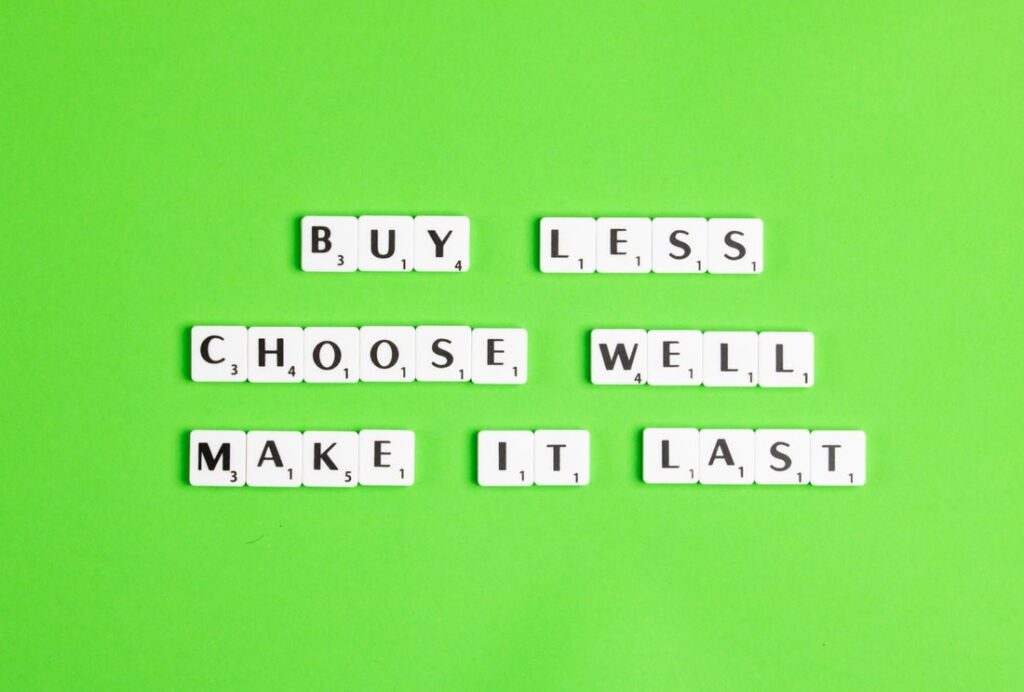
Caption: The first step to a sustainable lifestyle is shifting your mindset to one that makes decisions while considering the well-being of the Earth.
Credit: Edwards Howell, Unsplash
Step One: Switching to a sustainable mindset
The very first step to beginning anything starts with changing your mindset. While this seems like the easiest step, it can actually prove the most challenging to some. But if you’re here reading this, you’ve already taken a step in the right direction: the first foot forward on the path to a more sustainable future. Start by asking yourself some questions. Why do you want to become more sustainable? What are your motivations, goals, and intentions? And finally, what would you like to achieve by implementing sustainable behaviours, actions, and habits into your daily life?
Once you’ve determined the ‘why’, the ‘how’ can almost effortlessly fall into place. It acts as the foundation, the motivation, and fuels commitment.
Step Two: Analyse your waste
This is a big one. This is the part where you can actually see the waste of your consumer habits. This can be shocking, but it’s the shock factor that encourages and spurs action that turns into long-lasting efforts, effects, and differences. Look around your house and observe your habits. Do you often purchase single-use plastic products, such as chocolate or coffee, and throw away the plastic and trash after using the product? How much plastic is in your bin at the end of the week? And what, out of all your waste, do you really need? What can you do without in the future?
Don’t feel guilty about anything you find. Detach emotions and simply observe. You’re not a bad person for purchasing anything, especially because the push towards buying things and consistently consuming is ingrained in us from an early age. But because you’re already making moves to change your ways, you’re on your way to a brighter, healthier future and planet.
Making a list of common waste items can help tremendously when it comes to reducing, as well as upcycling, and avoiding certain items altogether.
Step Three: Find Alternatives
As I mentioned before, sustainability is becoming a trend. The significance of this is that more and more sustainable products are being released. Take your list of waste and see if you can find a more sustainable alternative for some or most of those items. For example, I used to purchase any kind of shampoo and throw the bottle away once I’ve used up the product. Now, I only purchase shampoo bars that come in sustainable packaging from a recognised, local sustainability brand. Not only is it more affordable, but it’s better for my hair, our water systems, and the planet as a whole.
There are many such alternative options available out there. A quick search online could be the only thing you need to undertake to start making effective alternative product swaps.
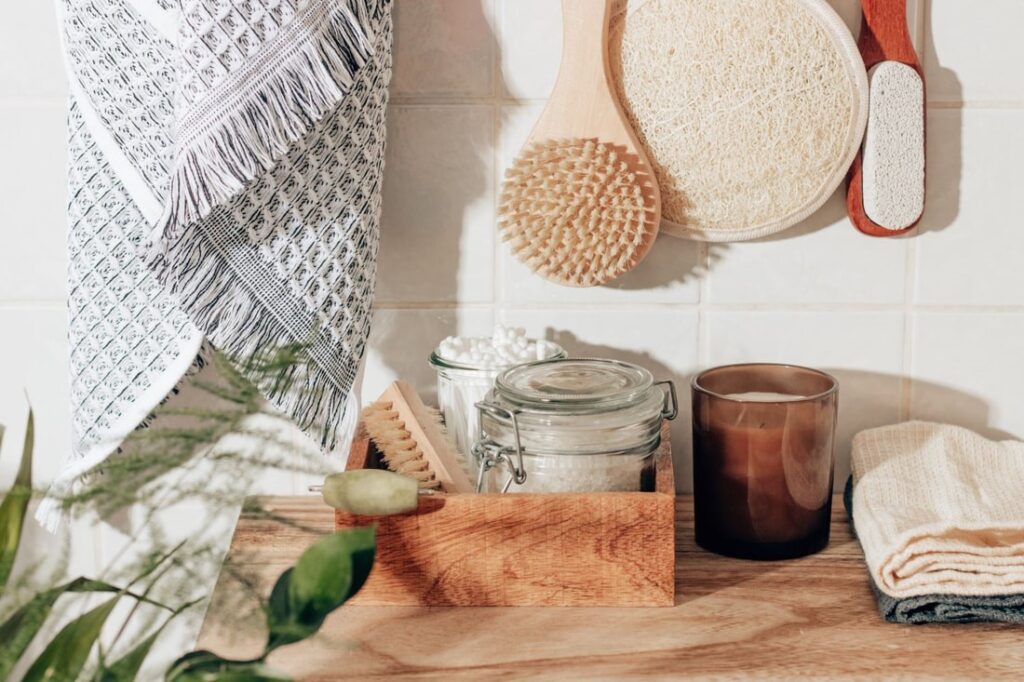
Caption: One way to become more sustainable is to find alternative, more eco-friendly products to swap with your everyday items such as shampoo and conditioner. With sustainability becoming a trend, many more products designed with the environment in mind are making their way to the shelves.
Credit: Svitlana VF, Unsplash
Step Four: Upcycle
Once a week, or every two weeks, have a look at your waste items and see which materials you can turn into something else. A glass bottle can make for an elegant candle holder, and that empty tin can be a rustic plant pot.
This is your chance to get creative and even save some money while mitigating harm on the planet.
If you’d like to gain more inspiration and read more examples of repurposing common waste items, click here.
Caption: Upcycling is one of the best ways to become more
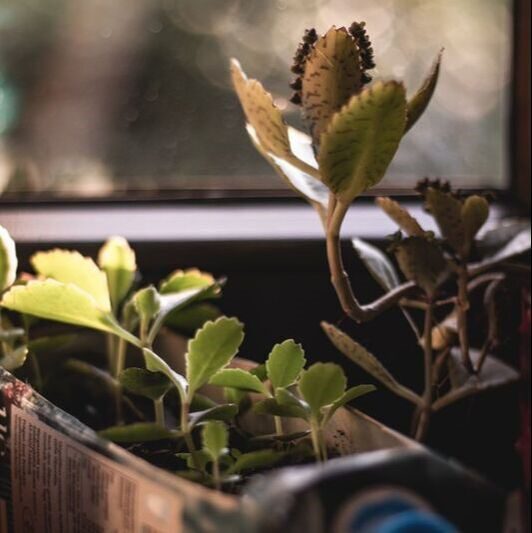
Caption: Upcycling is one of the best ways to become more sustainable. Turn your empty milk carton into a plant pot or change your old toothbrush into a shoe shiner!
Credit: Noah Eleazar, Unsplash
Step Five: Avoidance
Take another peek at your waste. What don’t you need and what can you stop consuming altogether? I’m a coffee addict, and I used to purchase many coffees from my local cafe. But coffee-on-the-go means takeaway cups and more plastic than meets the eye. Now, I either avoid buying coffee altogether and make my own at home or take my reusable cup with me.
Some items are better avoided altogether to help decrease the supply and demand cycle and, eventually, help stop the production of that item or use of that harmful material altogether.
Step Six: More Motivation
At this stage, many people can struggle with motivation. Are my efforts even doing anything? Am I wasting time and energy trying to be sustainable when others couldn’t care less and continue with unhealthy habits?No matter what we do, we will always have doubts. It’s part of being human. But there are two sides to every coin and the beauty of the mind is that you can control it. What you think, you become. So, take a deep breath and remind yourself of the larger ‘why’ behind your choices.
Another action you can take is to make a note of how much money you used to spend vs how much money you’re spending while consuming less. More often than not, you’ll find that you’re saving quite a bit – and that can be a huge motivational push.
Step Seven: Shop local and travel less
There are numerous benefits to shopping locally. It aids in the growth of the community, and country’s economy, and gives the environment a chance to breathe easily. Often, when you begin purchasing from local stores and sticking to local service, the harmful effects of transportation decrease. Not only will products have to be shipped and driven over large distances, but you yourself won’t have to travel far to collect your item.
And why stop there? Why not try to travel less, or switch to alternative modes of transport when you can? Maybe you’ve started working from home and need something from the shop. See if you can walk there, or even cycle. If you need to make a transmute into the city, try taking the bus or carpooling with friends and family. Every little bit helps.
If you’d like to learn more about why shopping locally is more sustainable, click here[1].

Credit: Cherie Birkner, Unsplash
Step Eight: Make your own
Here’s another incentive to connect to your creative side – see what you can make at home! This can be anything from organic cleaning products and self-hygiene items. For example, I use my coffee grounds to make a body scrub instead of buying an already-made product from the store. You can also make your own natural deodorant using some shea butter, bicarbonate of soda, and essential oils of your choice!
Step Nine: Purchase durable products
We often buy what’s most convenient to us. A pack of five disposable razors? That’s easy, right? Well, it’s certainly not easy on the planet. Instead of having to re-purchase certain items, we can shift our consumer habits and buy more sustainable products. A reusable razor, a metal straw, and a bamboo toothbrush not only last longer, some lasting lifetimes, but are also biodegradable when the time comes to dispose of them. And often, these products can be reused and repurposed once they’re outlived their original purposes.

Credit: Sandi Benedicta, Unsplash
Step Ten: Slowly start upgrading home items
Common household objects, such as taps and lightbulbs, harm the environment in numerous ways. However, in today’s day and age, we still require them to function. So why not make the shift to sustainability when it comes to your home? Start changing your light bulbs to LED energy-saving bulbs, change your toilet flusher to a water-saving one, and/or purchase a compost bin instead of throwing your food items in the bin.
While some of these changes can prove expensive, they actually save you money in the long run – not to mention the planet as a whole too!
Step Eleven: Introduce composting and recycling into your daily life
Composting and recycling can be strenuous, depending on how neurotic you get, but the benefits are paramount, to both you and the Earth. Composting is the sustainable disposal of organic waste. Fruit, vegetables, cardboard, coffee grind, and many more items such as these can be tossed into your compost heap. This dramatically decreases the amount of trash and rubbish you throw away, further increasing space in landfills and helping mitigate the emission of harmful methane into the atmosphere. It’s easy to start, and super effective, and the end product is a nutrient-dense concoction you can use as fertilizer to help your flora flourish!
Recycling is the act of stripping and remolding plastic into reusable material. Due to the many types of plastics out there, this can be an easy or difficult process. There are therefore a few things you absolutely must do to ensure your plastic is being recycled properly. While this requires effort, it’s unbelievably beneficial to the environment and definitely worth doing
If you’d like to learn more about recycling, read our Ultimate Guide to Plastic and Recycling here, and if you’d like to dig deeper into composting read our Ultimate Guide to Composting here.
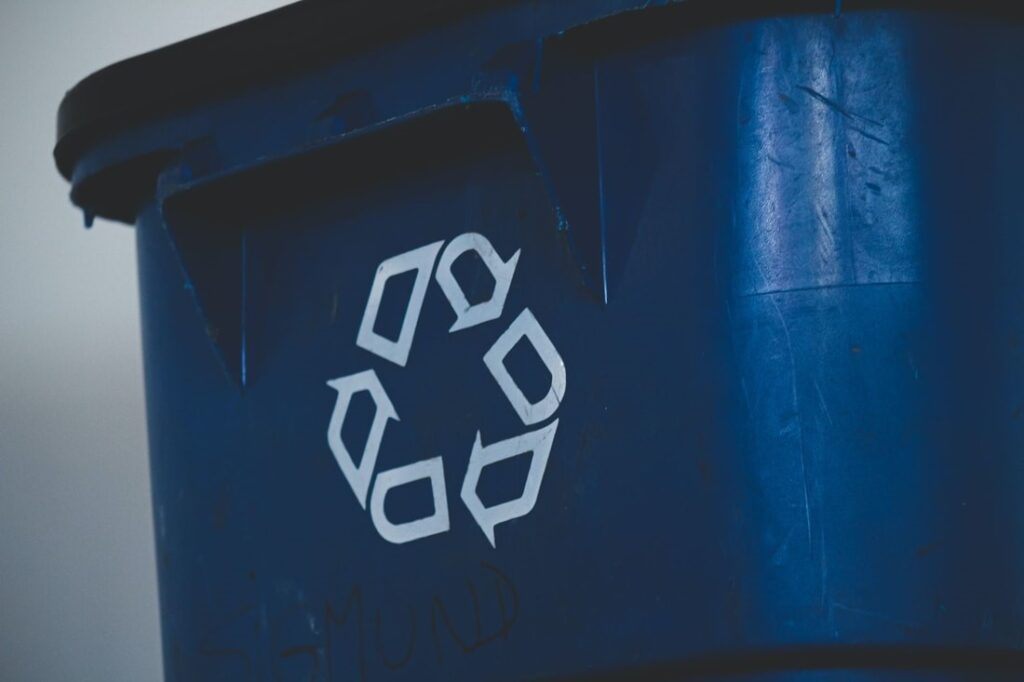
Credit: Sigmund, Unsplash
Step Twelve: Start repairing instead of replacing
This step can be challenging as many of us find it tedious to spend money replacing items instead of buying brand new ones. However, it’s one of the most effective tips. Are those shoes starting to break at the sole? Are those pants ripping at the seams? Don’t toss them out and re-purchase – just get them repaired! This will not only aid in the upliftment of the local community and help a family, but will also help you save money, give that item another lease on life, and benefit the planet in the long run. It’s a win-win-win situation!
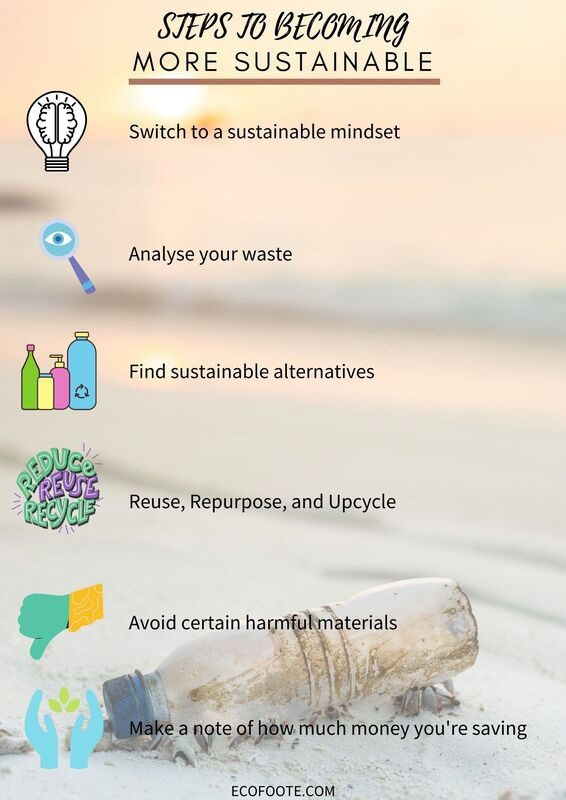
Credit: Georgia Carter, Ecofoote.Now that you have some steps to help you guide the way, we wish you luck in starting your new sustainable life and commemorate you on your decision. Everyone, from the animals, plants, planet, and people will thank you for your commitment.It starts with you, and it starts now. Take control of your actions and reap the rewards in the form of a brighter future and healthier home planet that will continue to provide in abundance for generations to come.
Reference List:
https://www.ahyggehomestead.com/beginners-guide-eco-friendly-living/
https://lowimpactlove.com/sustainable-living-ideas/
https://www.goingzerowaste.com/blog/four-tips-for-starting-a-zero-waste-lifestyle




